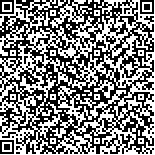下载中心
优秀审稿专家
优秀论文
相关链接
摘要

微波成像仪是中国第二代极轨气象卫星风云三号卫星的主要载荷之一,灵敏度是评价成像仪系统性能的关键参数之一,可以衡量辐射探测精度,因此该参数的准确计算及其长期稳定性会直接影响遥感数据业务应用效果。经过地面及在轨数据验证,与传统均方根标准差方法相比,利用Allan标准差方法计算星载微波成像仪的在轨灵敏度,首先获得每条扫描线的遥感电压数据,然后分析相邻扫描线之间的电压偏差,最后再结合微波成像仪系统增益,即可获得在轨灵敏度参数。利用Allan方法分析灵敏度,可以有效去除环境噪声的影响,有助于反应星载微波成像仪在轨灵敏度的长期稳定性,更加真实地反映仪器本身的在轨性能演变。分析结果表明:3台微波成像仪在轨性能稳定,长时间观测过程中,FY-3 C\D星成像仪在轨灵敏度的标准差≤0.01 K,FY-3 B星成像仪灵敏度标准差≤0.012 K;3台仪器在10.65 GHz、18.7 GHz、23.8 GHz及36.5 GHz频点8个通道的灵敏度均优于0.5 K;对于89 GHz频点的两个接收通道,FY-3 C\D星微波成像仪的灵敏度优于0.5 K,B星微波成像仪优于0.6 K。本文利用Allan方法获得了风云三号微波成像仪的在轨灵敏度参数,证明该方法适用于微波辐射计在轨灵敏度的计算,同时针对微波成像仪的相关分析结果为国产星载微波成像仪在轨定量应用奠定了基础。
The Microwave Radiation Imager (MWRI) is a main payload of the second-generation Chinese polar-orbiting meteorological satellite Fengyun-3. The MWRI observes the Earth radiation at 10.65 GHz, 18.7 GHz, 23.8 GHz, 36.5 GHz, and 89 GHz with dual polarization. Sensitivity is the minimum transformation amount of the brightness temperature that can be detected by the radiometer, that is, the equivalent noise temperature of the radiometer system; it is expressed as the Root Mean Square (RMS) standard deviation of the output temperatures when the radiometer observes a target with a fixed bright temperature. Therefore, sensitivity is a key parameter for evaluating the performance of the MWRI, and the long-term stability of this parameter could directly affect the application of remote sensing data. At present, the brightness temperature data of the hot load (black body) equipped on the MWRI are used to evaluate the on-orbit sensitivity of the instrument. However, when the spaceborne microwave imager is in flight, the hot load measurements could be affected by environmental noise, such as receiver temperature and ground Radio Frequency Interference (RFI), resulting in errors in the on-orbit sensitivity obtained by the RMS method. The validity of the Allan standard deviation method is studied to calculate the sensitivity and accurately evaluate the on-orbit sensitivity of the spaceborne microwave imager, and then the Allan method is used to evaluate the long-term stability of the on-orbit sensitivity of the MWRIs on board FY-3 B, C, and D satellites.Combining the ground and on-orbit observations of the MWRI, two methods of root mean square standard deviation and Allan standard deviation were used to calculate the sensitivities of the imager. The comparison found that: (1) The deviation between the results obtained by Allan method and the ground test is less than 0.03 K, indicating that under the vacuum calibration test, the Allan method can effectively calculate the sensitivity parameters of the radiometers. (2) When the observation area of the space-borne microwave imager is different, the on-orbit sensitivity obtained by Allan method is unchanged, indicating that the Allan method can eliminate the interference of RFI. (3) The on-orbit sensitivity obtained by Allan standard deviation is unaffected by the receiver’s ambient temperature change. Therefore, the Allan method could be used to calculate the on-orbit sensitivity of a space-borne microwave imager.The Allan method was used to analyze the long-term stability of the on-orbit sensitivity of MWRIs on board FY-3B, C, and D satellites, and concluded that: (1) The on-orbit sensitivities of the three microwave imagers were stable, and the stability of FY-3C and FY-3D MWRIs is better than that of FY-3B MWRI. The standard deviation of the on-orbit sensitivity of the FY-3B MWRI is ≤ 0.015 K, and the standard deviation of the on-orbit sensitivity of the FY-3C and FY-3D MWRIs is ≤ 0.01 K. (2) FY-3C and FY-3D MWRI sensitivities are the same, and the sensitivities of the 89 GHz receiving channels of the FY-3C and FY-3D MWRIs are significantly better than that of the FY-3B MWRI. The sensitivity of each receiving channel of the FY-3C and FY-3D MWRIs is better than 0.5 K, and that of the FY-3B MWRI is better than 0.6 K.The comparison of the ground test data and on-orbit observations confirmed that the Allan method can effectively calculate the sensitivity of the spaceborne radiometers. In addition, the calculation results of the FY-3 MWRIs show that the on-orbit sensitivity of the MWRIs is good, and the long-term on-orbit working state is stable.

